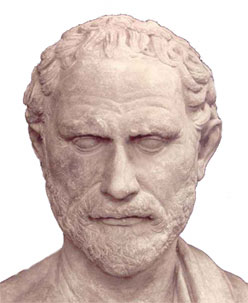Editor’s Note: The following story is taken from a book-length work authored by a senior Federal IT official currently working in government. This is one part of an extensive, firsthand account of how IT decisions are made, the obstacles standing in the way of real change in government technology management, and what one career Federal IT employee really thinks about the way government does IT.
Because the author is a current government employee and is concerned about the impact this may have on their career, we’ve agreed to publish this series of weekly excerpts under the author’s chosen pseudonym—Demosthenes.
MeriTalk has agreed not to make substantive changes to any of the chapters.
— Dan Verton, Executive Editor
CIO Authority
The Information Technology Management Reform Act, commonly referred to as the Clinger-Cohen Act, became law on Feb. 10, 1996, as part of the National Defense Authorization Act (NDAA). This legislation is significant for a few reasons that are still important today:
- It defined “Information Technology.” You can check it out for yourself, but basically, if there is data, it is IT. This is a big deal when we talk about supercomputer investments. Guess what, they are IT.
- It created the role of the CIO and it made him or her report to the agency head.
- It created the concept of modular contracting–precluding agencies from entering into contracts that required them to enter into future contracts to achieve the objective.
- Told NIST to start making standards for computer systems.
It also hatched the notion of Capital Planning and Investment Control (CPIC). In 1996 the Federal government was expecting to spend about $26 billion on IT1. That isn’t a lot compared to today’s number of nearly $90 billion, and it would be way over $90 billion if the Department of Energy didn’t hide half their IT spending in the shadows. Isn’t it ironic that the Department that Karen Evans came from has gone against so many of the ideas that she supported? For the uninformed, Evans was the CIO at the Department of Energy before becoming the Administrator of E-government and IT at OMB. That position would later become the CIO of the Federal government under her successor Vivek Kundra. But the Department of Energy has historically been the worst agency with respect to implementing the most basic aspects of the Clinger-Cohen Act. They don’t report any of their supercomputers to the IT Dashboard because, according to them, they are not IT. How fucking stupid is that? A type of computer is not information technology. That’s not even the worst of it. Get this data for yourself on the IT Dashboard.
I put DoD, the biggest agency, and USDA and Interior for comparison purposes. What are you hiding Energy, other than all your supercomputers? I would argue that their overall IT budget is artificially low, even if you correct for the supercomputers. They seem to be intentionally disaggregating their investments into “non-Majors.” Remember, Clinger’s CPIC requirement was to really look at the major investments to ensure that they have the proper oversight. Only 16 percent of the already artificially low IT spending at Energy is reported in major investments. DoD is like 40 percent, USDA is more than 50 percent and Interior is more than 90 percent.
Remember, Congress, the public, everyone, gets a lot more detail and visibility into the performance of major investment. So I have to ask again, what are you hiding Energy? Why don’t you want to be transparent about the performance of your IT portfolio? And please don’t misunderstand, you can go back in time and pull old data, this represents a baby-step improvement for Energy.


